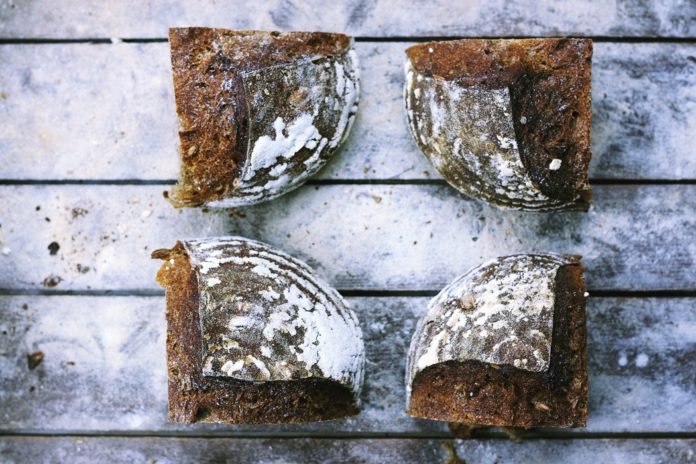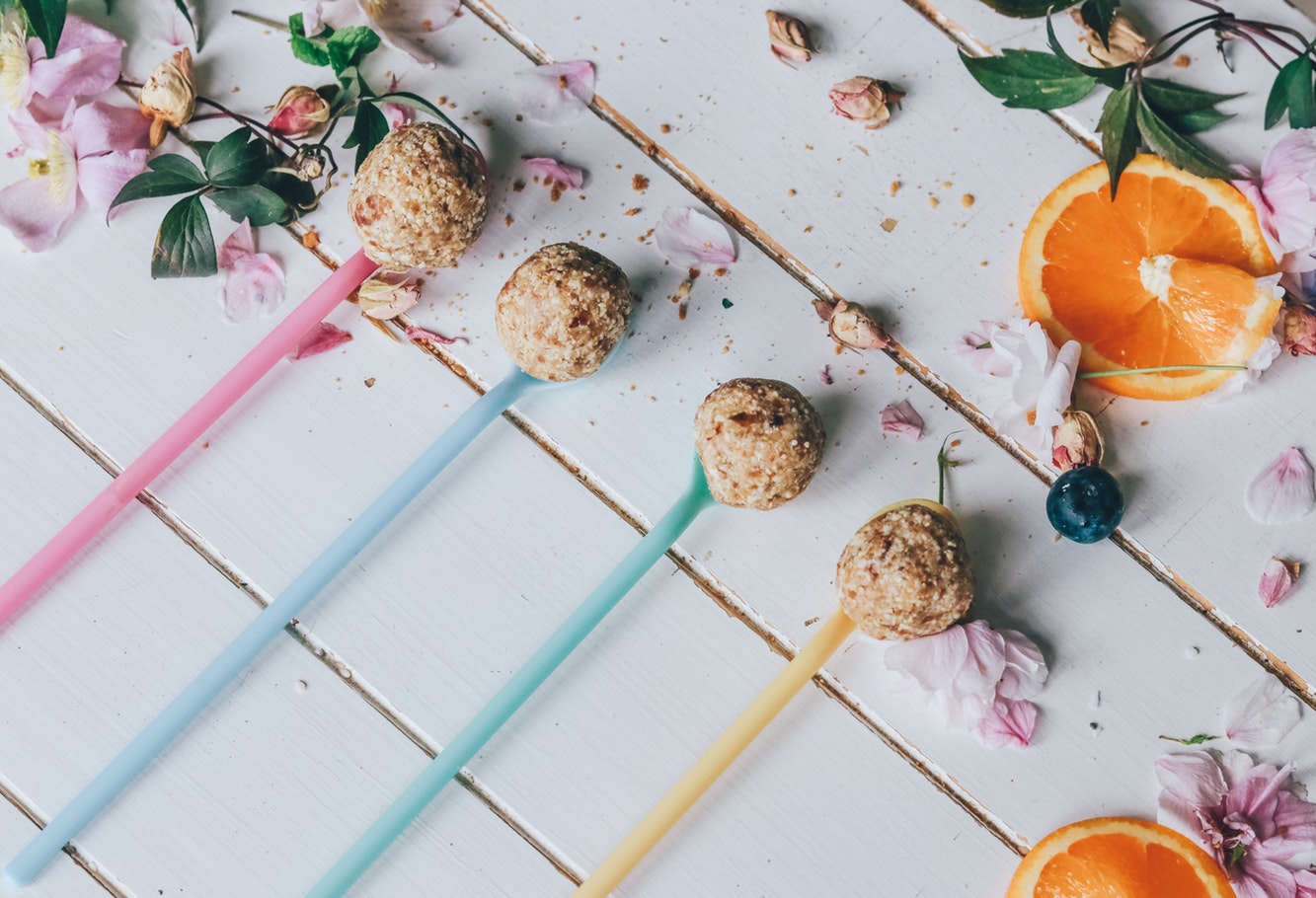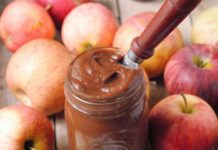
Whether you have food allergies, intolerances, or simply want/need to avoid certain foods, it can be a challenge knowing which foods to substitute or how much to swap out for another. Following a developed recipe may be one way to avoid certain foods, but I’m here to broaden your horizons, and, hopefully, get you out of your comfort zone with food substitutions. Using some of these tips, you’ll be able to modify your own, beloved recipes. Besides, it may be difficult to find a recipe with the necessary adjustments to fit your diet.
Get out your favorite recipes, make those substitutions, and get cooking (or baking).
Food substitutions
Baking Powder
No baking powder on hand? Try these simple swaps when needing 1 teaspoon, keeping in mind the rule: 1 teaspoon for every 1 cup flour
- 1/4 teaspoon baking soda and 5/8 teaspoon cream of tartar
- 1/3 teaspoon baking soda and 1/2 teaspoon cream of tarter
- 1/3 teaspoon baking soda and 1/2 teaspoon cream of tartar
- 1/4 teaspoon baking soda and 1/2 cup sour milk, buttermilk, or yogurt (decrease liquid amount called for in recipe by 1/2 cup)
- 1/4 teaspoon baking soda and 1/2 teaspoon lemon juice or vinegar used with sweet milk to make 1/2 cup (decrease liquid amount called for in recipe by 1/2 cup)
- 1/4 teaspoon baking soda and 1/4 cup molasses (decrease liquid amount in recipe by 1 to 2 tablespoons)
- 1 1/2 teaspoons phosphate or tartare baking powder
- 1 1/2 teaspoons single-action baking powder
Baking Soda (Sodium Bicarbonate)
Rule: 1/4 teaspoon for every 1 cup flour. When the recipe calls for 1 teaspoon baking soda, the following can be used:
- You need to use 2 to 3 times more double-acting baking powder than baking soda. Replace acidic liquid ingredient in recipe with non-acidic liquid.
- 3/4 teaspoon Ammonium bicarbonate

Eggs
The property of the egg you’re trying to create will determine which substitute to choose. An egg can act as a binder (holds the mixture together without need to rise, as in casseroles or burgers), leavening agent (adding air bubbles to a batter or dough, as in baked goods) or to simply add moisture. Even if you’re not avoiding eggs, you may find yourself without them at home when you want to bake. Rather than rushing to the store to purchase more eggs, try these methods instead:
Binder Substitutes, each equivalent to 1 egg:
- Use Ener-G Egg Replacer, a potato starch-based product (1 1/2 tsp Ener-G to 2 Tbsp water per egg)
- 1/4 cup avocado, mashed
- 1 Tbsp ground flaxseed + 3 Tbsp water
- 3 Tbsp nut butter (peanut, cashew, almond, sunflower; esp. in veggies burgers/cakes/patties)
Leavening Agent Substitutes, each equivalent to 1 egg:
- 1 tsp baking soda
- 1/2 mashed medium banana (cakes, muffins, pancakes, quick breads)
- 1/4 cup carbonated water
- 1 Tbsp ground chia + 3 Tbsp water + 1/4 tsp baking powder
- 1/4 cup full-fat coconut milk + 1 tsp baking powder
- 1 Tbsp ground flaxseed + 3 Tbsp water + 1/4 tsp baking powder
Added Moisture Substitutes, each equivalent to 1 egg:
- 1/4 cup applesauce (brownies, cakes, quick breads).
- 1 tsp baking soda.
- 1/2 mashed medium banana (cakes, muffins, pancakes, quick breads).
- 1 Tbsp ground chia + 3 Tbsp water.
- 1/4 cup dried fruit puree (apricot, prune, date).
- 1/4 cup silken tofu blended (brownies, heavy battered cakes).
- 1/4 cup vegetable puree (beets, carrots, pumpkin).
- 1/4 cup yogurt (cakes, muffins, pancakes, quick breads).
Other ideas for egg substitutes:
- scramble tofu (extra-firm) to replace scrambled eggs.
- use tofu in place of hard-boiled egg whites.
Fat
Don’t think of fat as being bad. It gets a bad rep, and it shouldn’t. The goal is to consume more of the healthier fats (plant-based sources). Think unsaturated, polyunsaturated, and omega fatty acids, and less of trans or saturated fats (animals based sources). No fat shaming allowed: We’re human after all (…..play song from Daft Punk here), and sometimes we want to indulge, and guess what? That’s okay. But in case you want to cut the fat, mix up the type of fat, or simply because you want to experiment with other foods, try these ideas:
- Greek yogurt for sour cream: use in baking or as a garnish for tacos, soups, etc.
- Mashed ripe bananas for baking fat: previously frozen bananas work as well, 1:1 fat to banana does the trick.
- Prune purée for butter: this works especially well in brownies and other dark baked goods. Combine 3/4 cup prunes with 1/4 cup boiling water and purée to combine. The ratio is 1:1, fat to prune purée.
- Chia seeds for butter: combine 1 tablespoon chia seeds with 9 tablespoons water, rest for 15 minutes, and use. However, you should only substitute half the fat if going this route.
- Applesauce for butter: you can easily cut out half the butter and substitute for applesauce without compromising too much flavor.
Gluten-Free Options
Swapping out gluten or changing the type of gluten can be tricky, especially when it comes to baking. However, this country has really jumped on the bandwagon of gluten-free options, some of which are included below. But unless you have a gluten sensitivity or have Celiac, it does not need to be avoided. Sadly, just like fat, it’s gets labeled as being bad, and it doesn’t need to be.
- Gluten-free flour for wheat flour: for every 1 cup of wheat flour, substitute 1 cup gluten-free flour plus 1 teaspoon xanthan gum.
- Quinoa for couscous: quinoa is a plant-based grain with all essential amino acids, and it doesn’t have gluten like couscous. Yet, it provides the same texture and similar mouth feel.
- Squash OR bean noodles for pasta: strips -or- ribbons of zucchini or squash are a great stand-in for spaghetti shaped pastas. There’s also a number of lentil and bean pastas on the market that do an amazing job at mimicking glutenous pasta.
- Greens for tortilla wraps: lettuce leaves of cabbage, romaine, and collards, to name a few, can offer an easy solution if you can’t find corn gluten-free tortillas.

Lower-Sugar substitutions
- Unsweetened applesauce for sugar: this is a 1:1 ratio; however, you will need to reduce the amount of liquid in the recipe by 1/4 cup for every 1 cup applesauce.
- Peanut butter: skip the Jif and check your peanut butter. Read the ingredients and look for those without added sugar. Peanuts, and perhaps oil, should be the only ingredients you read.
- Sparkling for soda (or tonic): move aside soda, this show belongs to sparkling water, the calorie-free flavored carbonated water. There are many companies to choose from, but I personally like to buzz my own water and add bitters or fresh citrus to provide flavor. That said, I would never say no to a La Croix or Spindrift.
- Plain yogurt with fresh fruit for flavored yogurt: you’ll get more nutrition with whole fruits and, typically, less processed sugar.
Salt
- Kosher for table salt: kosher salt is larger in size, thus is easier to control salt intake and prevent over salting.
- Citrus: the addition of citrus decreases the need for so much salt.
- Herbs and spices: rather than continuing to add salt to enhance a dish, why not try herbs or spices? Bring variety and spare your heart with the plethora of options.
- Fresh over frozen over canned: frozen produce is harvested at their peak without the addition of added sugar or salt for preservation and maximum nutrition, which makes it second best.
- Sumac: this goes in line with citrus, because sumac is strongly reminiscent of lemon (citrus).
- Low-sodium over regular varieties: this goes for soy sauce, canned products, soups, etc.
Vegan food substitutions
Afraid of those ‘meat alternatives’ are you? They’re not all that bad. In fact, I have tried some amazing products that taste exceptional. But I’m here to provide you with non-traditional swaps. Here is a list of the non-soy based options:
- Avocado purée for butter: both are high in fat, but avocado’s have a more ideal balance on the types of fat.
- Applesauce for butter: do this for your baking, but only swap out 1/2 the butter for the applesauce and add 1/2 cup oil to the recipe. This works well for quick breads like banana or zucchini bread.
- Bananas mashed for baking with butter: this is an equal swap for all your baking needs, one to one. Prune puree is another option (see above).
- Oat milk: Oatly milk this the only name you need to know. It’s so hot right now, and you’ve got to try it.
- Frozen banana puree for ice cream: no frozen custard to curb that cold craving, try pureeing bananas, then freezing in ice cube trays or ramekins. You can also do something similar with cashews (soak for 6-8 hours in water and puree).
- Eggs (see above for the specs): flax or chia works well.
- Nutritional yeast for cheese: it’s not cheese, but if you’ve sworn off the cow’s, then this is a great option. It’s similar in texture to that of Parmesan and can be a good topping to a noodle dish.
Whew, what a list right? It’s a great start for a list of food substitutions, but at least you now have some basics to get you started. Don’t see the kind of substitution you were looking for, or want to add a comment of your own? Email me at ranellek@gmail.com.
Find more recipes and information, visit www.ranellekirchner.com
For more on food and health, read this next: Celebrating 100 years of food, health, nutrition, education
















